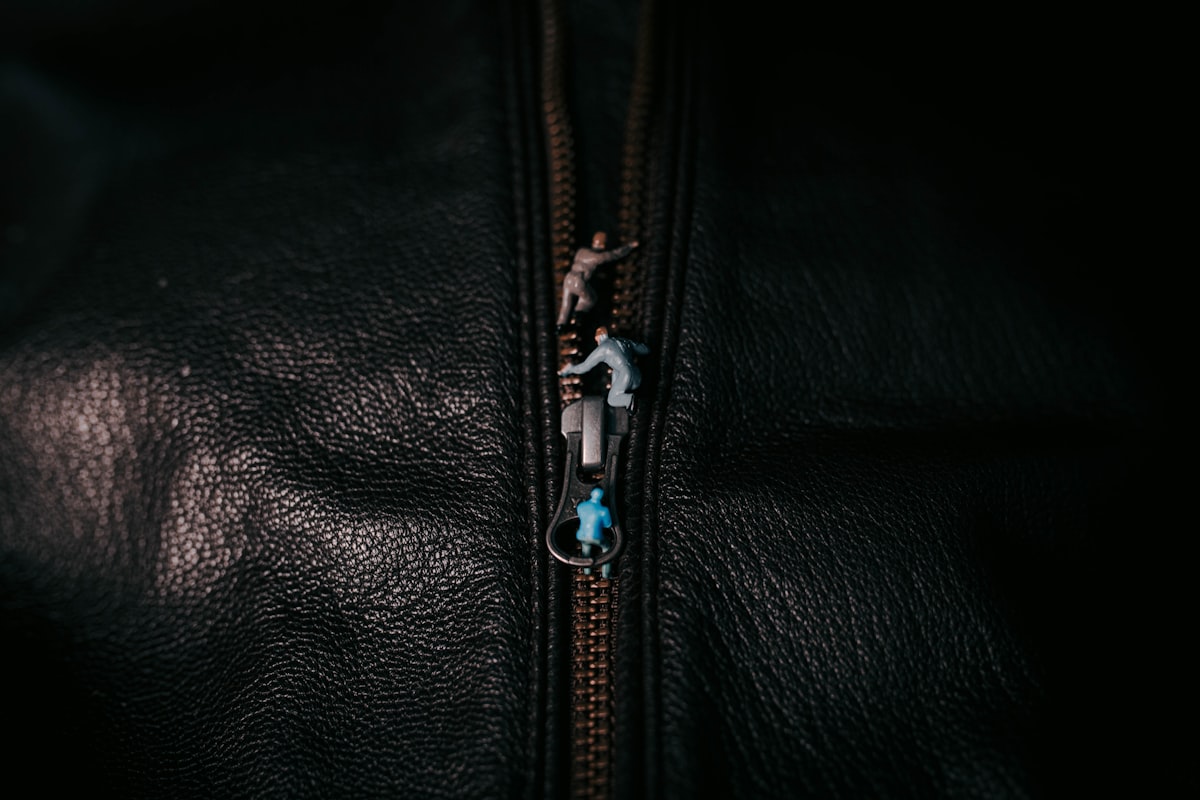Issue #1: Zippers, Rock Star Tantrums, Billionaries, and Windows
You may not have paid much attention to your zippers until one catches or breaks. There’s a good reason for that. Despite having been invented over 100 years ago, the zipper should be fool proof, and it pretty much is if your item uses a YKK zipper.

Zippers and Rock Star Tantrums
Line up several billion zippers and then circle the earth 80 times, laying them end to end. That’s how many zippers a single company, YKK, makes every year!
You may not have paid much attention to your zippers until one catches or breaks. There’s a good reason for that. Despite having been invented over 100 years ago, the zipper should be fool proof, and it pretty much is if your item uses a YKK zipper.
YKK is obsessed with details and quality and it shows. Most upscale clothing companies and “tactical gear” companies don’t even bother to use other brands of zippers because YKK is so reliable. One reason they’re so reliable is because they do everything themselves. As the LA Times reported in 1998:
YKK smelts its own brass, concocts its own polyester, spins and twists its own thread, weaves and color-dyes cloth for its zipper tapes, forges and molds its scooped zipper teeth, extrudes the monofilament for coil zippers, hammers and paints the sliders, clamps the stops, attaches the dangley pulls in a thousand varieties, and even fabricates the cardboard boxes in which zippers are packaged. Naturally, YKK makes the machines that make the components.
Josh Centers (@jcenters) at The Prepared presents a brief, well-written summary of YKK’s history and attention to detail. It's a clever bridge to explain why details matter (for survival gear, especially zippered gear). He used M&M’s and Rock ’n Roll to convey the point about why details are important.
The rock band Van Halen became notorious for demanding no brown M&Ms backstage at their shows. For years, stories abounded about how Eddie Van Halen would walk away from shows or destroy entire stages if he saw a single brown M&M. Van Halen’s diva behavior became a rock and roll legend.
But the truth was that the brown M&M demand was a smart safety precaution. Van Halen put on elaborate, potentially dangerous shows, and it was essential that all of the work was performed correctly. If the band walked backstage and saw brown M&Ms, they instantly knew that the instructions hadn’t been followed. Once, the band noticed the brown M&Ms and the stage later collapsed because the stage crew didn’t follow orders. Of course, the story became Van Halen destroying a stage because they hate brown M&Ms and the legend grew. (It didn’t help that Eddie Van Halen trashed the dressing room between discovering the M&Ms and the stage collapsing.)
Billionaires and Windows
YKK's founder, Yoshida Kogyosho, was inspired by Andrew Carnegie’s The Gospel of Wealth (1889) to create his own business philosophy, the Cycle of Goodness: No one prospers without rendering benefit to others. Carnegie accumulated a ridiculous amount of wealth before the US government realized that the "Robber Baron" monopolies were getting more powerful than it was.
Andrew Carnegie realized his extravagant wealth risked becoming immoral (and it gave him a bad public image). David Nasaw reveals in his biography, Andrew Carnegie, that based on Carnegie's prenuptial agreement with his finacée it's clear that Carnegie committed himself to give away his fortune two years before he published The Gospel of Wealth. However, contrary to Carnegie's own public claims, Carnegie seemed set upon giving away his wealth long before his image was tarnished by the Homestead steelworks massacre.
As part of his wealth divestment, Carnegie founded the Carnegie Technical Schools which merged with Mellon Institute of Industrial Research in the late 1960s. It's an amusing twist of fate, as the Mellon family were outbid by Carnegie (who rigged the auction with bribes) when they both expressed interest in purchasing the same farm land. The Mellons also partnered with a former business partner, Henry Clay Frick, after Frick fell out with Carnegie.
But now almost 100 years later, the connection between Yoshida and Carnegie returns. In 2019 YKK (who also make windows) and Carnegie Mellon University announced a joint research effort to use robotics and other advanced technologies to install windows, doors, and products into buildings. The goal is to reduce build times and increase construction productivity in an ever-decreasing world of construction labor availability.
Links of Interest
- The biography of Andrew Carnegie, by David Nasaw (Book, affiliate link)
- Homestead Strike (Article)
- Why YKK zippers are the brown M&Ms of product design: look at the little details to judge overall gear quality (Blog post)
- One Of America’s Best Manufacturers Is This Japanese Zipper Maker (Article)
- Why YKK? The mysterious Japanese company behind the world’s best zippers (Article)
- Did Van Halen’s Concert Contract Require the Removal of Brown M&Ms? (Article)
- A World Unzipped Is Unthinkable (Article)
